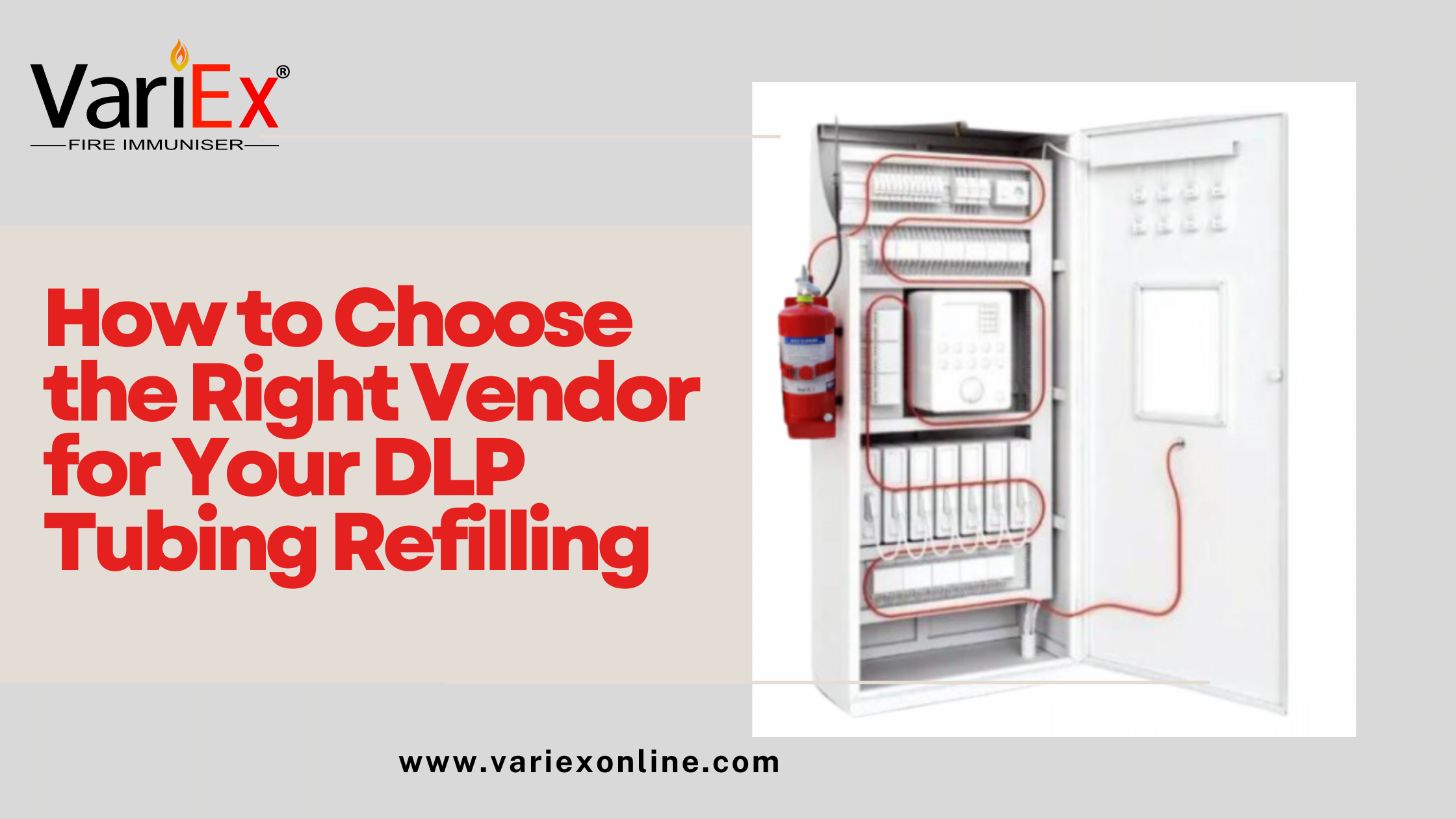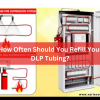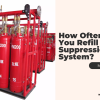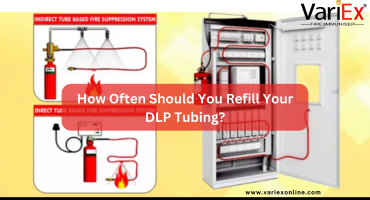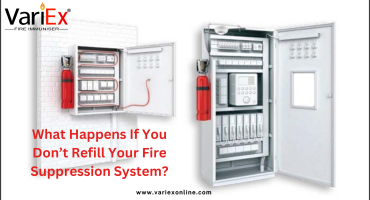![]()
Fire Immuniser
+91-7829629111
Email: info@variex.in
Varistor Technologies Pvt. Ltd.
Block-1, First Floor, Ardente Office One, Hoodi Circle, ITPL Main Road, Bengaluru, Karnataka 560048, IN
How to Choose the Right Vendor for Your DLP Tubing Refilling
How to Choose the Right Vendor for Your DLP Tubing Refilling
In the world of industrial and commercial fire suppression systems, ensuring safety isn’t just about installing the right system—it’s about maintaining it. Direct Low-Pressure (DLP) tubing systems are designed to detect and suppress fires at their earliest stages. However, like all safety equipment, these systems require regular inspection, servicing, and most importantly, refilling with the proper suppression agents.
Choosing the right vendor for DLP tubing refilling is a decision that can directly impact the safety of your assets, staff, and operations. This guide will walk you through every important factor to consider when selecting a vendor, helping you make a choice based on compliance, experience, and long-term reliability.
Why Choosing the Right Vendor Is Crucial
DLP fire suppression systems are designed to respond quickly and accurately in critical moments. If refilling is done incorrectly—with the wrong agent, under improper pressure, or with contamination—it may result in catastrophic failure. Moreover, fire safety regulations require professional handling and certified documentation.
That’s why the vendor you choose must demonstrate technical know-how, transparency, and adherence to fire safety standards.
Top Criteria for Choosing a DLP Tubing Refilling Vendor1. Certifications and Compliance Standards
Make sure the vendor holds valid certifications from recognized regulatory authorities such as:
NFPA (National Fire Protection Association)
ISO 9001:2015
UL/FM approved agent use
Local AHJ (Authority Having Jurisdiction) registration
These accreditations ensure that the vendor follows industry-best practices and legally compliant procedures.
Specialization in DLP Systems
Not all fire suppression service providers are experts in DLP-based systems. Ask whether the vendor:
Specializes in DLP fire suppression
Has completed projects for facilities similar to yours
Has trained technicians familiar with tubing-specific behavior
Specialization minimizes the risk of missteps during the refill process and ensures smooth, efficient servicing.
Type and Quality of Suppression Agents
The type of agent used significantly affects safety and system longevity. Vendors should only use:
OEM-approved suppression agents
Clean agents like Novec 1230 for electronic or sensitive environments
Environmentally safe compounds (low global warming potential)
Also, ensure that the vendor’s refill process prevents contamination of the suppression medium.
Service Delivery: On-Site vs. Off-Site Refilling
Understand the difference between on-site and off-site refilling and which suits your facility better.
Here’s a quick comparison:
| Criteria | On-Site Refilling | Off-Site Refilling |
|---|---|---|
| Downtime | Minimal (refilled without removal) | Moderate (tubing must be disassembled) |
| Cost | Typically lower | Slightly higher due to logistics |
| Transparency | High – you can monitor the process | Limited – done remotely |
| Turnaround Time | Fast – often completed same day | May take 1–3 days |
| Ideal For | Critical environments needing uptime | Non-urgent or scheduled maintenance |
Emergency Support and Service Availability
In fire protection, response time matters. The right vendor should:
Offer 24/7 emergency refilling services
Maintain a quick dispatch and repair team
Provide priority service to clients under contract
Availability during downtime or after discharge can be the difference between full protection and vulnerability.
Experience and References
Experience is a key differentiator. Look for vendors with at least 5 years of proven track record in DLP tubing systems. Ask for:
Case studies or project examples
Client testimonials in similar industries
Reference contacts willing to share insights
Reviews from companies in sectors like manufacturing, IT, or data centers carry particular weight.
Insurance and Liability Coverage
Ensure the vendor carries professional liability insurance. This covers:
Accidental damage during servicing
Failures due to improper refilling
Worker-related incidents on your property
Ask for proof of insurance with coverage tailored to fire suppression services.
Transparency in Pricing
Avoid vendors that offer vague or bundled quotes. A good vendor will break down:
Cost of the suppression agent (per kg or liter)
Labor charges
Travel or on-site service fees
Equipment and tubing parts (if replaced)
This helps you understand your budget clearly and avoids hidden costs later.
Documentation and Compliance Reporting
Post-service documentation is critical for:
Insurance audits
Safety compliance certifications
Internal fire safety protocols
Ensure the vendor provides:
Fill logs with agent type and batch info
Pressure test records
Compliance tags and inspection certificates
Maintenance Plans and SLAs
Reliable vendors offer annual maintenance contracts or Service Level Agreements (SLAs) that include:
Scheduled refills
Priority emergency service
Discounted inspections
Dedicated account managers
SLAs provide peace of mind and ensure your system stays within compliance year-round.
Questions to Ask Before Hiring
Before finalizing a vendor, ask:
Do you have experience with DLP systems in my industry?
What suppression agents do you use, and are they OEM-compliant?
Can you provide documentation and logs after refilling?
Do you offer on-site refilling with minimal downtime?
What is your emergency response time?
These questions filter out vendors who may be generalists or lack specific fire safety knowledge.
Mistakes to Avoid When Choosing a Vendor
Going with the cheapest quote without verifying credentials
Ignoring reviews or complaints from previous customers
Overlooking the agent type compatibility
Not clarifying response time and service availability
Choosing a vendor with unclear or missing documentation
Conclusion
Fire safety is not an area for shortcuts. Selecting the right DLP tubing refilling vendor means ensuring the continued effectiveness of your fire suppression system. It's about partnering with a service provider who understands your risk profile, values compliance, and can act swiftly when it matters most.
The right vendor will become more than just a service provider—they’ll be a trusted part of your facility's safety infrastructure.
Frequently Asked Questions
Typically, every 1–3 years, or immediately after a discharge. Frequency also depends on agent type and operating conditions.
No. Fire suppression refilling must be handled by certified professionals to comply with fire codes and ensure safety.
Clean agents like Novec 1230 or FM-200 are ideal due to their non-conductive, residue-free properties.
Yes, in most cases. On-site refilling reduces downtime, is more transparent, and avoids system disassembly.
Reputable vendors always provide logs, inspection records, and certificates for audit and safety compliance.
Final Say
At VariEx.in and VariexOnline.com, we specialize in supplying and installing top-quality fire fighting systems and equipment. From fire extinguishers to advanced suppression systems, we offer comprehensive solutions tailored to your needs. Our experienced team ensures precise installation and maintenance for optimal safety.
Trust VariEx for reliable fire protection. Contact us online or call 7829629111 to learn more.
We specialize in manufacturing, supplying, and distributing a comprehensive range of fire fighting equipment, including state-of-the-art fire extinguishers. Read our most searched blogs and find interesting information on topics such as how to use a fire extinguisher, how to calculate fire fighting water tank capacity, fire extinguisher refilling, obtaining a Fire NOC, understanding fire fighting systems, types of fire protection systems, the fire hydrant system, and the fire sprinkler system. These resources provide essential knowledge for ensuring safety and compliance with fire safety regulations. Additionally, you can explore guides on the maintenance of fire protection equipment, the latest advancements in fire safety technology, and best practices for fire risk assessment and management.
Our expertise extends to fire alarm systems, fire hydrant systems, and fire suppression systems, including fire sprinklers. Each product meets rigorous international standards for reliability and performance, ensuring effective fire safety products tailored to diverse applications and industries. Additionally, we are providing Fire Extinguisher Refilling and AMC services to ensure ongoing maintenance and operational readiness of fire safety equipment.
"WHAT YOU CAN READ NEXT"
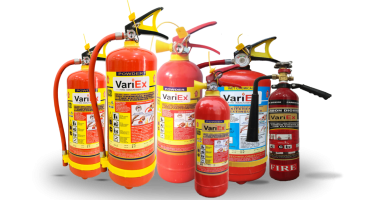 Read more +24 November 2023 in Fire Extinguisher
Read more +24 November 2023 in Fire ExtinguisherWhat types of fire extinguishers are available for different fire classes?
 Read more +10 April 2025 in Fire Suppression
Read more +10 April 2025 in Fire Suppression

